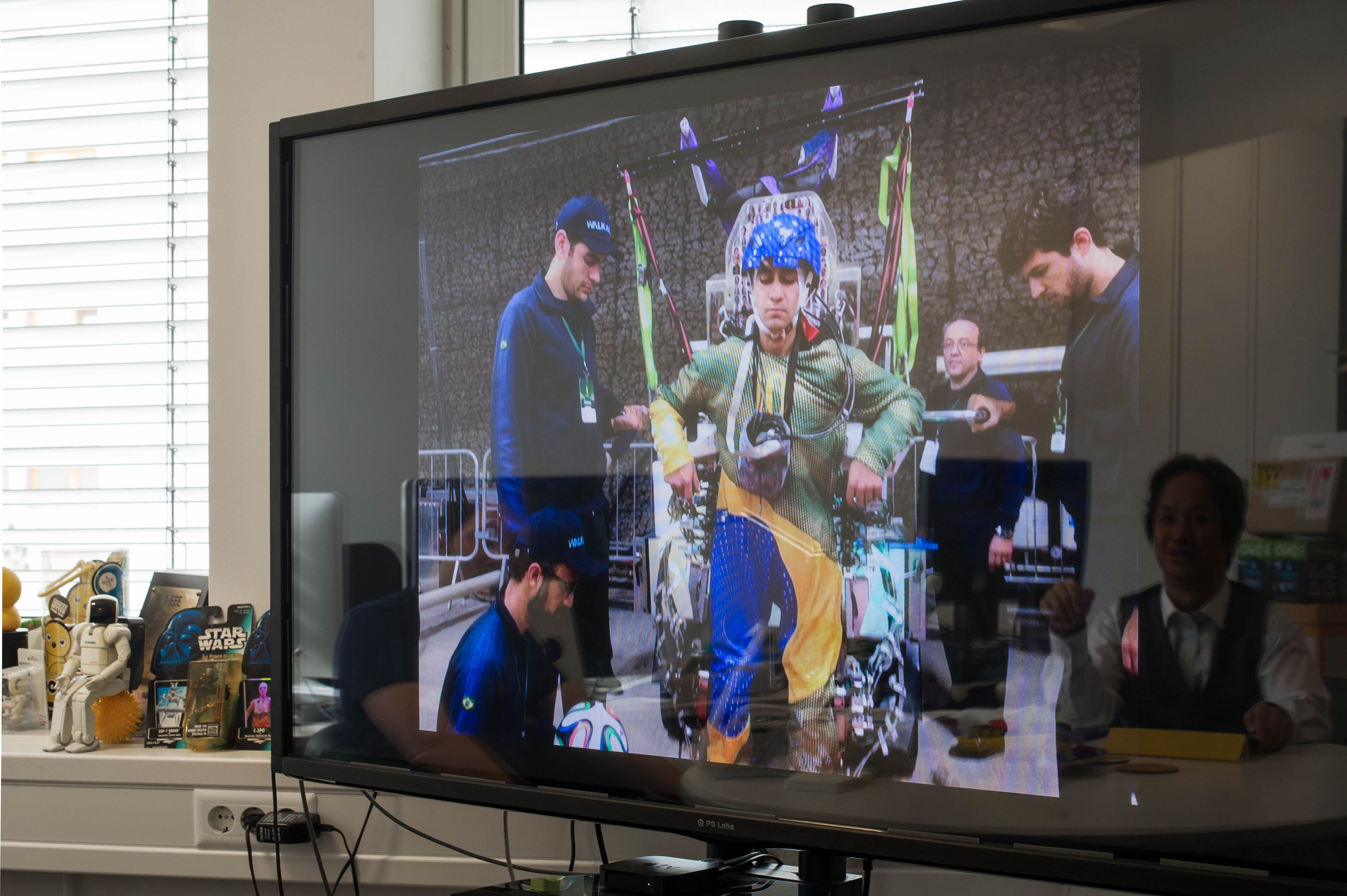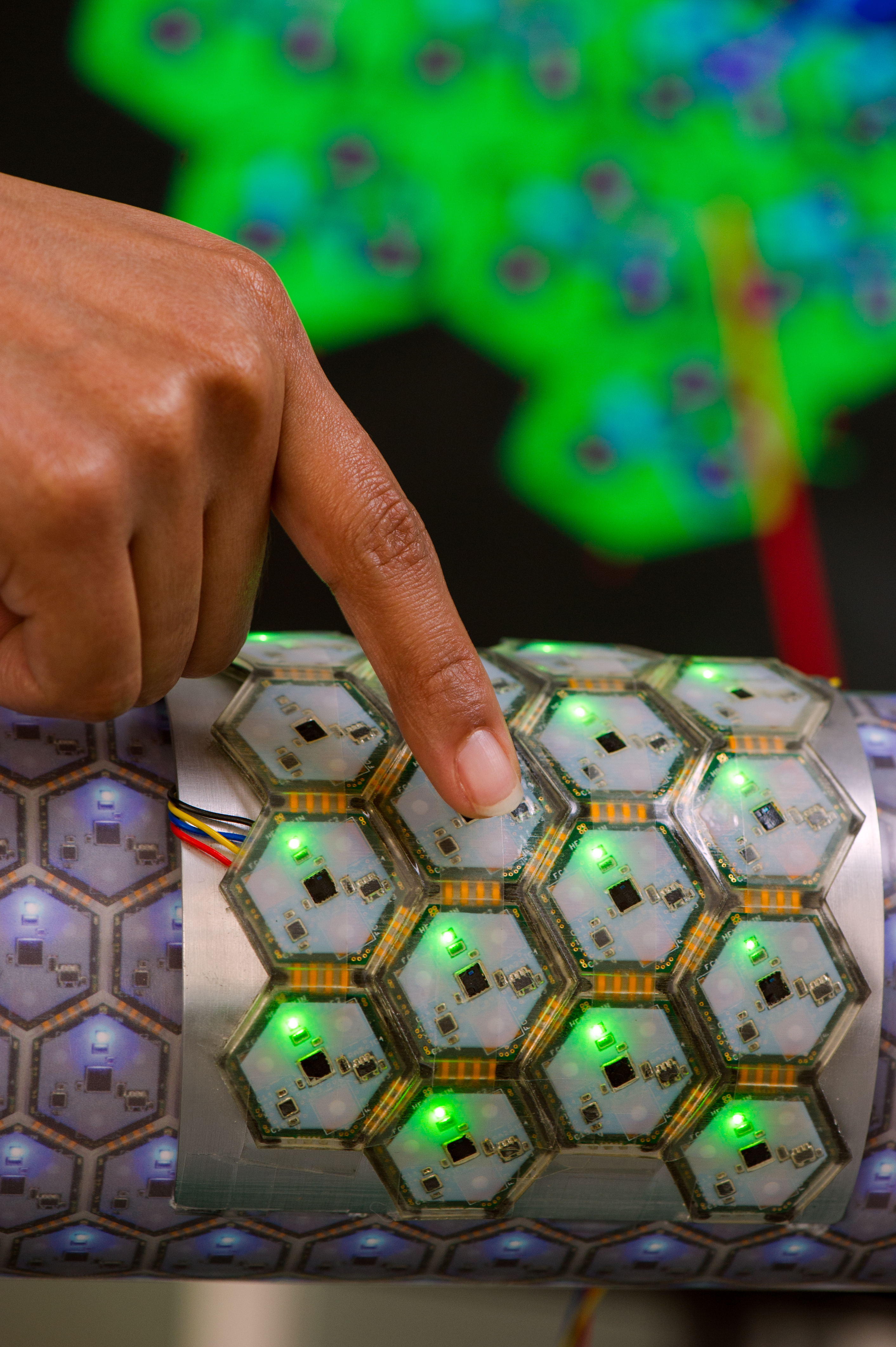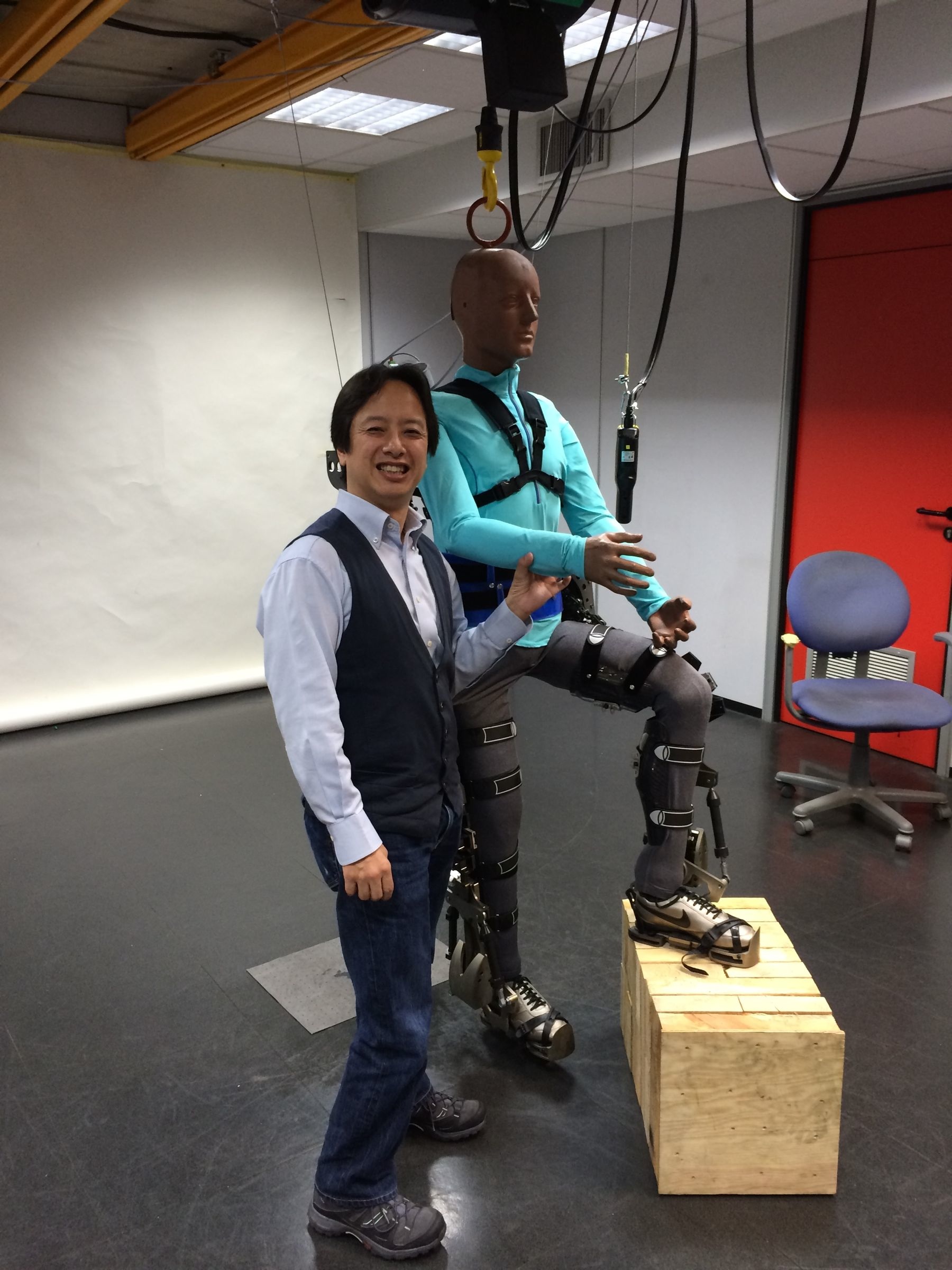"Robots help us to understand humans"
It was a moving experience, in every sense of the expression, when a paraplegic Brazilian man kicked off the first ball of the tournament at the opening ceremony of the 2014 Soccer World Cup in Brazil. The young man was wearing an exoskeleton controlled with his thoughts. Two years later the researchers of the "Walk Again" project published a spectacular study: Training at the human-machine interface helped the patients' healing process.
Prof. Gordon Cheng, Institute for Cognitive Systems, Technische Universität München, played a decisive role in the development of the exoskeleton. In an interview he spoke about the latest results and how our future could look with robots.
I was already fascinated by robots in my childhood. Robots were always portrayed as helping humans in the cartoons I watched while growing up, so I always had a highly positive attitude towards them. This fascination together with a technical and scientific interest for robots are still with me today.
All the robots in Star Wars, especially R2D2, of course. And Astro Boy is another one of my favourites, a robot who is constantly helping humans, which I like very much.

"Walk Again" was created in 2008. The research director is my good friend Prof. Miguel Nicolelis, a leading expert in the neurosciences, in particular in the area of the human-machine interface (read about Prof. Nicolelis' research using VR and robotics to help paraplegics walk again here) Our objective was to develop a robot-controlled system that can help paralysed people to regain sensation and to walk again.
It was a wonderful moment, a milestone. We spent many months training patients to handle the exoskeleton, in order to find out if it would be possible for the exoskeleton to help them walk and feel again. Many different scientists from various disciplines worked together to achieve this. It was a very important instant for all of us.
Over the last two years the medical team has conducted clinical studies of patients who had been training with the exoskeleton. It turns out that their physiological and mental states improved. They recovered a certain degree of control over the movement of their legs. That was a big surprise to us.
A factor referred to as brain plasticity plays a role. Using training, over a period of time the brain can reorganise itself. There are plenty of theories regarding the body schema, a representation of our physical body in the brain which helps us interpret sensations and movements. With the appropriate training we can generate new networks in the brain that let us reorganise the body schema and integrate a new element such as the exoskeleton.
One key element was tactile feedback, which makes it possible for the patient to feel ground contact with each step. Here at the TU Munich we developed an artificial skin for the purpose. Its sensors can measure vibrations, temperature, pressure and proximity. The artificial skin is attached under the feet of the robot. The exoskeleton then uses the sensors to detect each individual step. The patients receive tactile feedback via small motors on the arms, to inform them of every step that the exoskeleton takes. And after a certain amount of time the brain associates this feeling with the steps. At the time we didn’t know whether or not this would actually work, but after six months of intensive training the patients reported that they could actually feel the steps.

We've developed a new generation of artificial skin capable of detecting proximity and touch. The skin makes it possible to make safer robots. A standard industrial robot arm normally wouldn't notice that you were getting closer to it. We've developed an artificial skin which is highly sensitive, making it possible to control the arm with very gentle touches. One of the most important special features of this artificial skin is that it can organise its own body schema. The robot knows automatically where the skin is and where it is being touched. We've transferred the concept of the body schema, which represents the physical body in our brain, to the robot.
I believe that building humanoid robots helps us build better robots for humans. At the same time it makes it possible for us to understand human beings better. When we build a humanoid robot that can walk like a human, it helps us build a better exoskeleton. The algorithm we program for the walking robot can also be applied directly to the exoskeleton that can in turn help a human being regain mobility.

I hope so. There will be an evolutionary process similar to the ones we've seen with the microwave oven and the mobile phone. The robots will become a part of our everyday lives. And I'd say a positive part of our lives.
I hope that the technology we develop, such as the next generation of the exoskeleton and artificial skin, will directly help people in their everyday lives.


